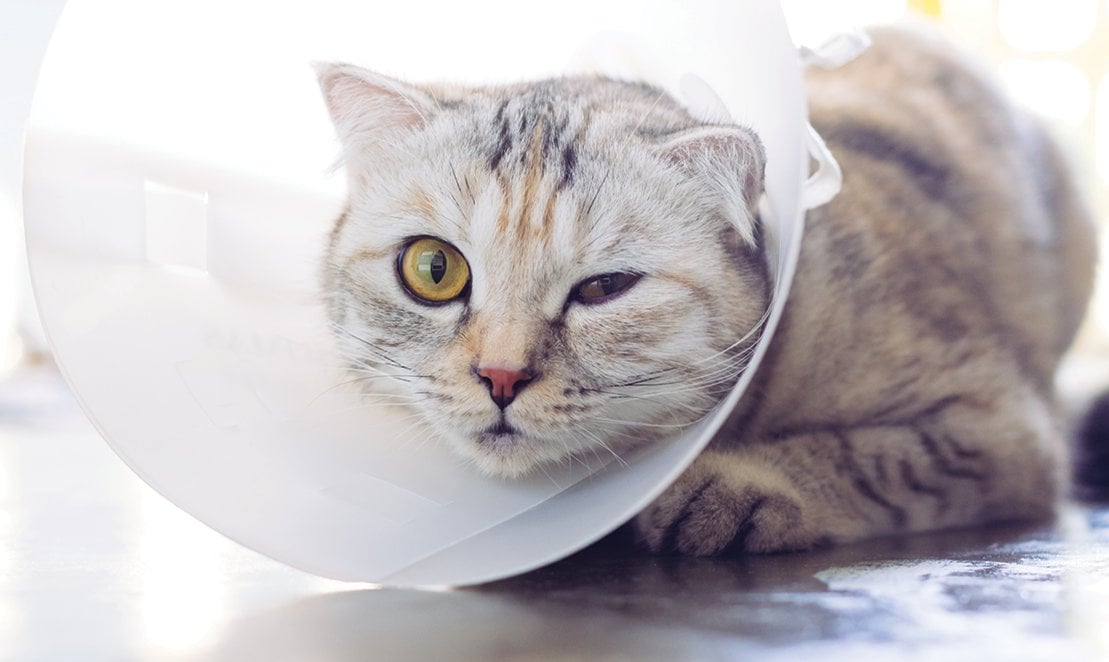Virtual Library | E-Collar Etiquette
We prescribe E-collars for pets following a variety of surgeries or procedures associated with the eye. Although the “cone of shame” can be frustrating for animals and owners alike, it is important that pet patients wear the E-collar for as long as prescribed. Make sure your pet is wearing their E-collar correctly by checking our tips in the brochure and details to follow.
← Flip through our digital brochure
DO’S & DON’TS
Here are few frequently asked questions about the use of E-collars:
Short-term pain,
LONG-TERM GAIN
In veterinary ophthalmology, we prescribe E-collars for pets following a variety of surgeries or procedures that require us to operate inside of the eye; suture around the periocular area; or when treating a deep ulcer. Although they can be frustrating for animals and owners alike, it is important that pet patients wear the E-collar for as long as prescribed. Sutures used in and around the eye can be as thin as a single piece of hair. This makes them easy to dislodge—and itchy too. For these reasons, wearing the E-collar protects the eye area during the healing process.
 Having your pet wear the E-collar can also save you money. Dogs and cats that do not wear them as instructed can dislodge their sutures. This may require a second surgery to repair the damage incurred by their scratching at the eye area. In some cases (especially when cataract or lens luxation surgery is involved), vision-threatening injuries can result if the E-collar is not worn correctly. This can result in decreased vision or even removal of the globe.
Having your pet wear the E-collar can also save you money. Dogs and cats that do not wear them as instructed can dislodge their sutures. This may require a second surgery to repair the damage incurred by their scratching at the eye area. In some cases (especially when cataract or lens luxation surgery is involved), vision-threatening injuries can result if the E-collar is not worn correctly. This can result in decreased vision or even removal of the globe.
So, You Brought Home a Bulldog
Cataracts and Cataract Surgery
Entropion Causes and Treatment
Feline Herpesvirus and Treatment
OFA Certification Registry Exams
Visit our blog, In Focus, to learn more about the pets we see, the treatments we offer and the services we provide to help your pet “see a better life.”
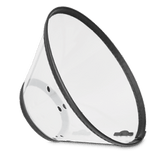 Also referred to as lampshades, radar dishes and the “cone of shame,” plastic E-collars have gotten a bad rap. Designed to keep your pet’s paws away from the head and neck area, they play a key role in medical recovery following a number of veterinary procedures.
Also referred to as lampshades, radar dishes and the “cone of shame,” plastic E-collars have gotten a bad rap. Designed to keep your pet’s paws away from the head and neck area, they play a key role in medical recovery following a number of veterinary procedures.
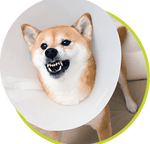 Give them time to adjust to the E-collar. While it can restrict your pet’s vision or disorient them somewhat, we can accommodate by providing clear, see-through cones for their use. You can help your pet further adjust by removing items they may bump into at home, such as low tables or decorative objects in the room. Remember, this is only temporary!
Give them time to adjust to the E-collar. While it can restrict your pet’s vision or disorient them somewhat, we can accommodate by providing clear, see-through cones for their use. You can help your pet further adjust by removing items they may bump into at home, such as low tables or decorative objects in the room. Remember, this is only temporary!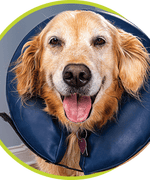 No. While these are effective for general veterinary uses, they do not protect the eye or ocular area after ophthalmic procedures. With inflatable or soft E-collars, your pet is still able to rub their face on furniture or other objects at home and/or paw at the eye. This can be damaging to a healing procedure, surgical area or ulcer.
No. While these are effective for general veterinary uses, they do not protect the eye or ocular area after ophthalmic procedures. With inflatable or soft E-collars, your pet is still able to rub their face on furniture or other objects at home and/or paw at the eye. This can be damaging to a healing procedure, surgical area or ulcer. Oversee your pet when you are at home, confining them to a low-risk, pet-friendly room if possible. It is not safe to let pets wander unsupervised in the yard while wearing the E-collar. For dogs, use a lead for outdoor and potty time, and keep an eye on them during the break. For cats, we advise keeping them inside at all times when wearing the collar.
Oversee your pet when you are at home, confining them to a low-risk, pet-friendly room if possible. It is not safe to let pets wander unsupervised in the yard while wearing the E-collar. For dogs, use a lead for outdoor and potty time, and keep an eye on them during the break. For cats, we advise keeping them inside at all times when wearing the collar.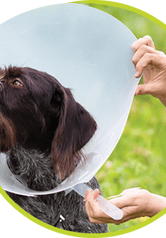 If you are tempted to take the E-collar off for a short break, please talk to us first! We can find out more about the situation and talk you through solutions for keeping the cone in place. Any time it comes off, close supervision is an absolute must. It may be very difficult to get the cone back on your pet (especially cats), so removal is not typically advisable.
If you are tempted to take the E-collar off for a short break, please talk to us first! We can find out more about the situation and talk you through solutions for keeping the cone in place. Any time it comes off, close supervision is an absolute must. It may be very difficult to get the cone back on your pet (especially cats), so removal is not typically advisable. The length of the E-collar is just as important as the type of collar. It should extend past the tip of your pets nose at all times. If it is not an appropriate length, it won’t provide the adequate level of protection. We often see brachycephalic breeds, whose wide/short heads require they wear a bigger sized E-collar around the neck. Often the length is too long. In such cases, a trained staff member will customize the E-collar for the pet here at our clinic. We’ll make sure that it’s the right fit before you leave. Don’t cut the collar.
The length of the E-collar is just as important as the type of collar. It should extend past the tip of your pets nose at all times. If it is not an appropriate length, it won’t provide the adequate level of protection. We often see brachycephalic breeds, whose wide/short heads require they wear a bigger sized E-collar around the neck. Often the length is too long. In such cases, a trained staff member will customize the E-collar for the pet here at our clinic. We’ll make sure that it’s the right fit before you leave. Don’t cut the collar. We dread calls that begin with, “I only took it off so he/she could sleep!” It’s imperative that the E-collar stay on at all times, especially in bed. Often, clients will want to remove the collar to make their pet more comfortable at bedtime. Please don’t do this. While you are sleeping, your pet may be up and about, subconsciously causing damage to their surgery site.
We dread calls that begin with, “I only took it off so he/she could sleep!” It’s imperative that the E-collar stay on at all times, especially in bed. Often, clients will want to remove the collar to make their pet more comfortable at bedtime. Please don’t do this. While you are sleeping, your pet may be up and about, subconsciously causing damage to their surgery site.